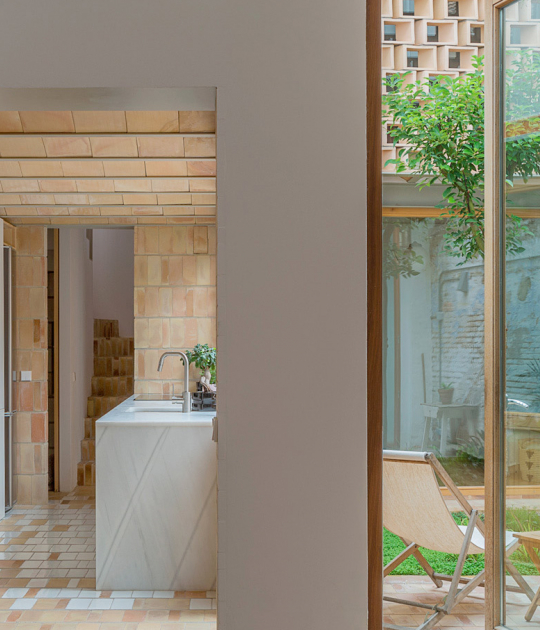For this they released the entire ground floor. The structure of the house rests laterally on the partition-walls, letting the house slabs float. A house without columns.
The upper floors cover a large multi-purpose living area and the bedrooms, while the underground area houses a multifunctional work space linked to a generous English patio. Thus, we managed to obtain on a plot of just over 220m² a house of 250m² with some associated outdoor spaces of different uses, with another 250m².
Project description by AYLLÓN . PARADELA . DE ANDRÉS Arquitectos
THE CONTEMPORARY HOUSE ROLE
Currently, an architecture is demanded with flexibility beyond what is strictly functional. The mutation capacity of the domestic is what defines the contemporary house, this being understood as an accumulator of changing and indeterminate rituals. Thus, the house must be able to accommodate both the planned and the unforeseen program, imagining at the same time as a place of refuge, leisure framework and even work space.
DOMESTIC SCENARIOS
In response to these premises, the house is conceived as a container of multiple overlapping scenarios that allow maximum adaptability of its use over time. You imagine an essential home in which serving elements are reduced to the minimum possible in favor of free, open and flexible served spaces - domestic scenarios. In short, it is intended that the house maximizes the opportunities for use so that its inhabitants live as they want and not as the house imposes on them.
To do this, the house is buried in the land at the same time as it rises above it, allowing the ground floor to be released. In this way, an open-covered intermediate area of access to housing is generated, a large threshold that is part of the courtyard in which the entire plot is converted, this being understood as a stay more of house. The upper floors cover a large multi-purpose living area and the bedrooms, while the underground area houses a multifunctional work space linked to a generous English patio. Thus, we managed to obtain on a plot of just over 220m² a house of 250m² with some associated outdoor spaces of different uses, with another 250m².
CONTEXT AND MATERIALITY
At the same time, the house seeks to integrate in the neighborhood in a subtle and natural way. Attending to the surrounding environment, using the predominant traditional materials in the lower houses of the area, but from a contemporary view. It is committed to a rational and sincere construction, where the elements that make up the structure and the enclosures are shown clearly and honestly determining the spatiality of the house.
Thus, the ground floor is defined by the perimeter brick wall seen on which the house supports, which also serves as a support for the growth of vines, ivy and jasmine that will bring scents and changing colors throughout the year. In the upper levels, the brick seen is used as a structural material in the middle walls to hold the reinforced concrete slabs released by the plants. Meanwhile, on the longitudinal fronts, the brick wall unfolds when it lacks its structural sense, being understood as a stratified facade that allows to house inside, the sliding woodwork of larch wood that make up the gaps. At the energy level, the great thermal inertia of the set, together with the natural ventilation and adjustable sun protection of all rooms, together with the use of a radiant-cooling floor with aerothermal energy production, ensure the reduced energy consumption of the house.












































